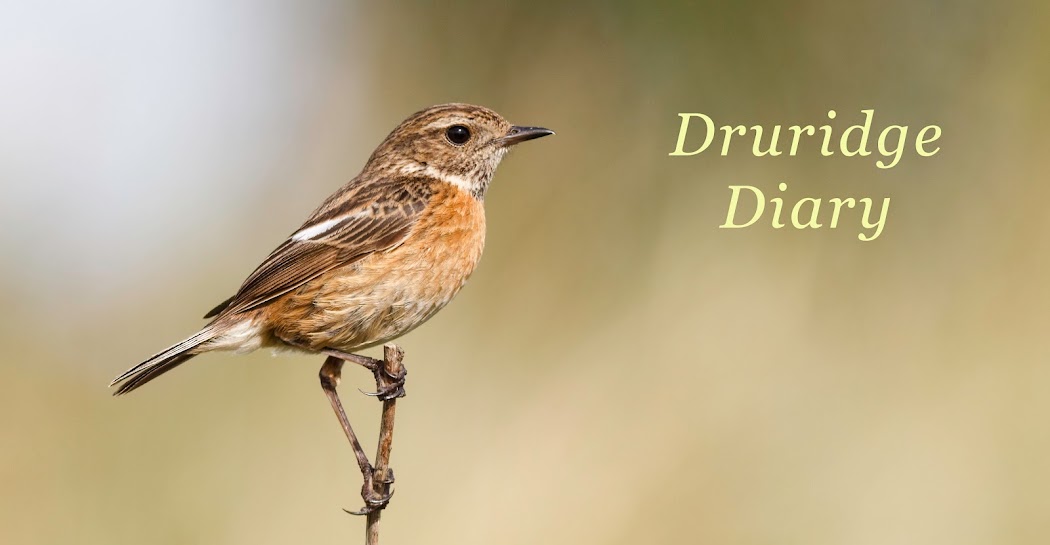Jay has been seen on the patch before, but not by me. A bird that has so far alluded me on the patch, it's nice to add it to the list.
We were ringing this morning, between net rounds I was having a chat to Dave and Roger when they both saw the bird flying over. I saw it, with my naked eye, but had no bins, luckily Dave passed me his and I saw it well before it disappeared over the top of the bushes heading north.
Jay isn't a bird you see very often on the coastal plain and even less so right down on the shore. It's addition to my patch list takes me to 230 and is the second new bird for the list this year after my spring nightjar.
Ringing was quite slow, despite the arrival of birds during the week. Though after the huge arrival of yellow-browed warblers to the east coast, we predicted we might catch one this morning, we caught two.
 |
| Yellow-browed warbler number 1 |
 |
| Yellow-browed warbler number 2 |
Last night, I had a very brief visit and a single bird skulked in the thick hawthorn by the Budge screen, but that was a far as I got.
152 lesser redpoll
153 siskin
154 JAY




















